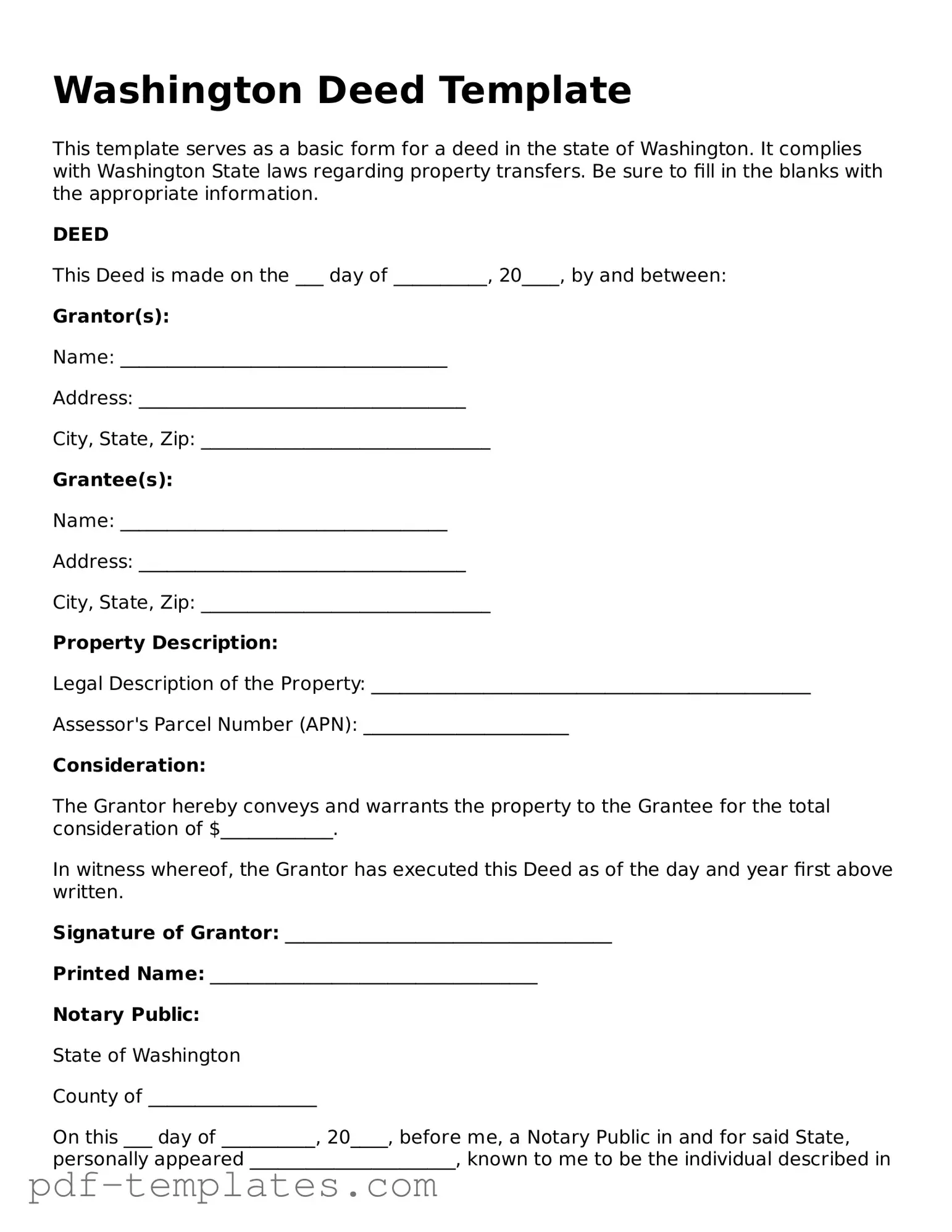The Washington Deed form shares similarities with the Quitclaim Deed. A Quitclaim Deed transfers ownership without guaranteeing that the property is free of liens or other claims. This means that if someone sells you a property using a Quitclaim Deed, they are not promising that they own it outright or that there are no issues attached to it. It simply conveys whatever interest the seller has in the property at that moment.
Another document that resembles the Washington Deed is the Warranty Deed. Unlike the Quitclaim Deed, a Warranty Deed provides a guarantee that the seller holds clear title to the property and has the right to sell it. This means that if any legal issues arise regarding ownership, the seller is responsible for resolving them. This added layer of protection can be crucial for buyers looking to ensure their investment is secure.
The California Motor Vehicle Power of Attorney form is a legal document that allows a car owner to appoint someone else to handle specific tasks related to their vehicle on their behalf. This can include registering the vehicle, signing documents related to the sale, and other actions that would normally require the direct involvement of the owner. It's a powerful tool for those who need to delegate these tasks due to absence or incapacity, as outlined on https://formcalifornia.com/.
The Bargain and Sale Deed is also similar to the Washington Deed. This type of deed implies that the seller has ownership of the property and the right to sell it, but it does not offer the same guarantees as a Warranty Deed. It indicates that the seller is transferring their interest in the property, but it does not protect the buyer against any claims or liens that may exist on the property.
Then there is the Special Purpose Deed, which is often used in specific situations, such as transferring property between family members or in cases of divorce. While it serves a unique purpose, it functions similarly to the Washington Deed by transferring ownership. However, it may not carry the same legal protections as other types of deeds.
The Trustee's Deed is another document that resembles the Washington Deed. This deed is used when a property is held in a trust and is being transferred by the trustee. While it serves to convey the property, it may come with certain limitations or conditions based on the trust agreement, differing from the straightforward nature of a Washington Deed.
A Bargain and Sale Deed with Covenants is similar as well, as it conveys property and includes certain promises from the seller. These covenants assure the buyer that the seller has not done anything to diminish the value of the property. However, it does not guarantee a clear title like a Warranty Deed does, which can leave buyers exposed to potential claims.
The Mineral Deed is another document that parallels the Washington Deed. This deed specifically transfers rights to minerals beneath the surface of a property, such as oil, gas, or minerals. While it focuses on a specific aspect of property ownership, it operates similarly in that it transfers ownership rights from one party to another.
The Easement Deed also shares similarities with the Washington Deed. An Easement Deed grants a right to use a portion of someone else's property for a specific purpose, like accessing a road or utility lines. While it does not transfer ownership of the property itself, it establishes legal rights similar to how a Washington Deed establishes ownership rights.
Finally, the Life Estate Deed is akin to the Washington Deed in that it conveys property ownership but does so with conditions. A Life Estate Deed allows a person to live in and use the property for the duration of their life, after which ownership passes to another designated individual. This type of deed provides a unique structure for property transfer while still functioning in a way that aligns with the principles of ownership transfer found in a Washington Deed.
